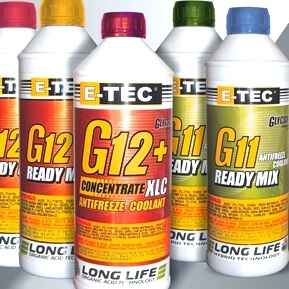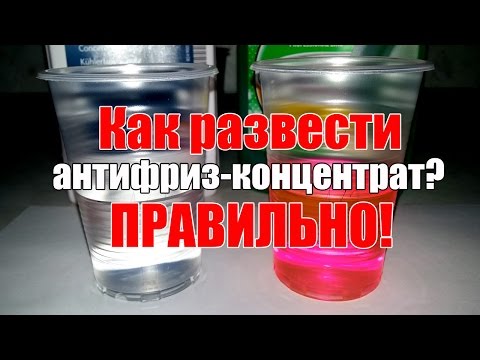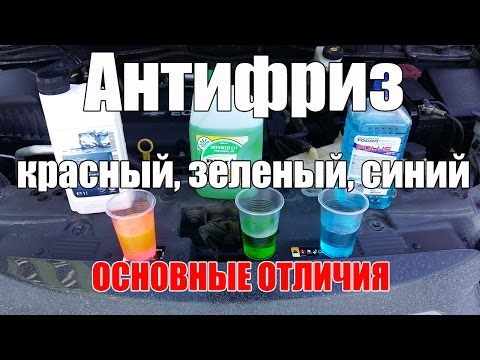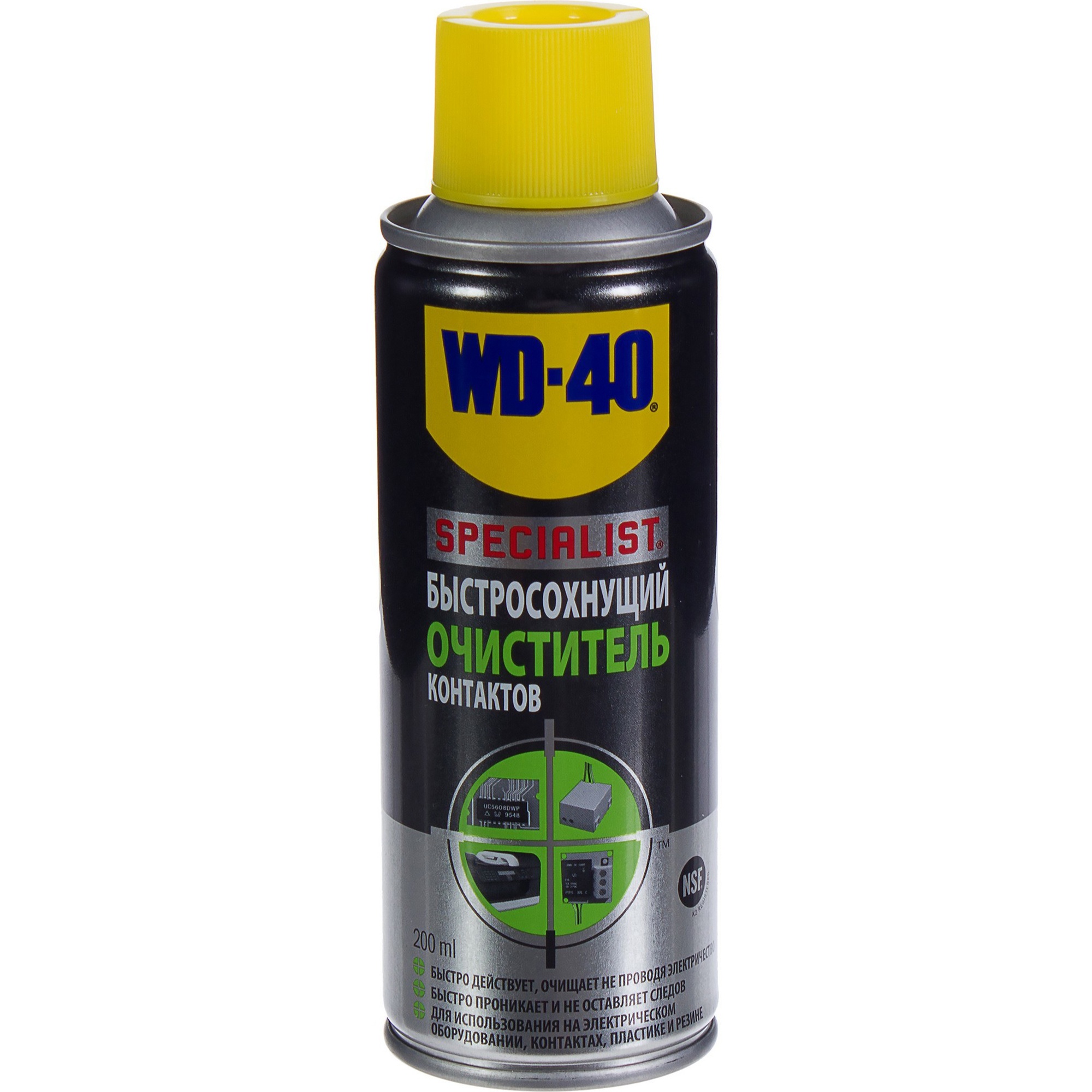
Antifreeze G12, its features and difference from antifreezes of other classes
Content
Antifreeze - a coolant based on ethylene or propylene glycol, translated "Antifreeze", from international English, as "non-freezing". Class G12 antifreeze is designed for use on cars from 96 to 2001, modern cars usually use 12+, 12 plus plus or g13 antifreezes.
"The key to stable operation of the cooling system is high-quality antifreeze"
What is the feature of G12 antifreeze
Antifreeze with class G12 usually turns red or pink, and also, compared to antifreeze or antifreeze G11, has a longer service life - from 4 to 5 years. G12 does not contain silicates in its composition, it is based on: ethylene glycol and carboxylate compounds. Thanks to the additive package, on the surface inside the block or radiator, localization of corrosion occurs only where it is needed, forming a resistant micro film. Often this type of antifreeze is poured into the cooling system of high-speed internal combustion engines. Mix g12 antifreeze and coolant of another class - unacceptable.
But he has one big minus - G12 antifreeze begins to act only when a center of corrosion has already appeared. Although this action eliminates the appearance of a protective layer and its rapid shedding as a result of vibrations and temperature changes, which makes it possible to improve heat transfer and longer use.
Main technical characteristics of class G12
Represents homogeneous transparent liquid without mechanical impurity of red or pink color. G12 antifreeze is ethylene glycol with the addition of 2 or more carboxylic acids, does not form a protective film, but affects already formed corrosion centers. The density is 1,065 - 1,085 g/cm3 (at 20°C). The freezing point is within 50 degrees below zero, and the boiling point is about +118°C. Temperature characteristics depend on the concentration of polyhydric alcohols (ethylene glycol or propylene glycol). Often, the percentage of such alcohol in antifreeze is 50-60%, which allows you to achieve optimal performance. Pure, without any impurities, ethylene glycol is a viscous and colorless oily liquid with a density of 1114 kg / m3 and a boiling point of 197 ° C, and freezes at 13 ° C minutes. Therefore, a dye is added to the antifreeze in order to give individuality and greater visibility of the liquid level in the tank. Ethylene glycol is the strongest food poison, the effect of which can be neutralized with ordinary alcohol.
What does G12 antifreeze consist of
The G12 class antifreeze concentrate contains:
- dihydric alcohol ethylene glycol about 90% of the total volume, which is needed to prevent freezing;
- distilled water, about five percent;
- dye (color often identifies the class of coolant, but there may be exceptions);
- additive package at least 5 percent, since ethylene glycol is aggressive towards non-ferrous metals, several types of phosphate or carboxylate additives based on organic acids are added to it, acting as an inhibitor, allowing to neutralize the negative effect. Antifreezes with a different set of additives perform their function in different ways, and their main difference is in the methods of combating corrosion.
In addition to corrosion inhibitors, the set of additives in the G12 coolant includes additives with other necessary properties. For example, the coolant must necessarily have anti-foaming, lubricating properties and compositions that prevent the appearance of scale.
What is the difference between G12 and G11, G12+ and G13
The main types of antifreeze such as G11, G12 and G13 differ in the type of additives used: organic and inorganic.

General information about antifreezes, what is the difference between them and how to select the right coolant
Cooling liquid class G11 inorganic origin with a small set of additives, the presence of phosphates and nitrates. Such antifreeze was created using silicate technology. Silicate additives cover the internal surface of the system with a continuous protective layer, regardless of the presence of corrosion areas. Although such a layer protects already existing foci of corrosion from destruction. Such antifreeze has low stability, poor heat transfer and a short service life, after which it precipitates, forming an abrasive and thereby damaging the elements of the cooling system.
Often antifreeze G11 turns green or blue colors... This coolant is used for cars manufactured before 1996 year and a car with a large volume of the cooling system.
In Europe, the authoritative specification of antifreeze classes belongs to the Volkswagen concern; therefore, the corresponding VW TL 774-C marking provides for the use of inorganic additives in antifreeze and is designated G 11. The VW TL 774-D specification provides for the presence of organic-based carboxylic acid additives and is labeled as G 12. VW standards TL 774-F and VW TL 774-G are marked with classes G12 + and G12 ++, and the most complex and expensive G13 antifreeze is regulated by the VW TL 774-J standard. Although other manufacturers such as Ford or Toyota have their own quality standards. By the way, there is no difference between antifreeze and antifreeze. Tosol is one of the brands of Russian mineral antifreeze, which is not designed to work in engines with an aluminum block.
And fluid classes G12, G12 + and G13 varieties of organic antifreezes Long Life. Used in cooling systems of modern cars manufactured since 1996 G12 and G12 + based on ethylene glycol but only G12 plus assumes the use of hybrid technology production in which silicate technology was combined with carboxylate technology. In 2008, the G12 ++ class also appeared, in such a liquid, an organic base is combined with a small amount of mineral additives (called lobrided Lobrid or SOAT coolants). In hybrid antifreezes, organic additives are mixed with inorganic additives (silicates, nitrites and phosphates can be used). Such a combination of technologies made it possible to eliminate the main drawback of G12 antifreeze - not only to eliminate corrosion when it has already appeared, but also to perform a preventive action.
Cooling liquid class G13 the beginning is produced from 2012 and is calculated for engine ICEs operating in extreme conditions. From a technological point of view, it has no differences from the G12, the only difference is that made with propylene glycol, which is less poisonous, decomposes faster, which means is less harmful to the environment when it is disposed of and its price is much higher than the G12 antifreeze. Invented based on the requirements to improve environmental standards. G13 antifreeze is usually purple or pink, although in reality it can be painted in any color, since it is just a dye on which its characteristics do not depend, different manufacturers can produce coolants with different colors and shades.
The difference in the action of carboxylate and silicate antifreeze
G12 Antifreeze Compatibility
Whether it is possible to mix antifreezes of different classes and different colors is of interest to quite a few inexperienced car owners who have purchased used cars and do not know which brand of coolant was poured into the expansion tank.
As we figured out earlier, color does not affect the property, and different manufacturers can paint in different colors, but still the same there are generally accepted norms. The most common antifreezes are green, blue, red, pink and orange. Some standards may even regulate the use of liquids of various shades, but the color of antifreeze is the last criterion that should be considered. Although often green is used to denote lowest grade liquid G11 (silicate). So let's say mix antifreeze G12 red and pink (carboxylate) allowed, as well as antifreezes only on an organic basis or liquids only on an inorganic basis, but you need to know that from different manufacturers "Chill" can be with different set of additives and chem. in addition, the reaction of which cannot be guessed! Such incompatibility of G12 antifreeze lies in the high probability that a reaction may occur between the additives included in their composition, which will be accompanied by precipitation or deterioration in the technical characteristics of the coolant.
Therefore, if you want to keep the internal combustion engine working, fill in antifreeze of the same brand and class, or completely drain the old fluid and replace it with the one you know. small topping up the liquid can be done with distilled water.
How to choose antifreeze
When the question concerns the choice of antifreeze not only by color, but also by class, then it is recommended to use the one that the manufacturer indicates on the expansion tank or technical documentation of the vehicle. Since, if copper or brass was used in the manufacture of the cooling radiator (installed on older cars), then the use of organic antifreezes is undesirable.
Antifreezes can be of 2 types: concentrated and already diluted at the factory. At first glance, it would seem that there is no big difference, and many drivers advise taking a concentrate, and then diluting it with distilled water yourself, only in proportion (1 to 1 for our climatic conditions), explaining this by saying that you are pouring not a fake , but unfortunately, taking the concentrate is not entirely correct. Not only because the mixing at the plant is more accurate, but also because the water at the plant is filtered at the molecular level and distilled, it seems dirty in comparison, so later this can affect the appearance of deposits.
How to dilute antifreeze is determined by the table:

How to properly dilute antifreeze concentrate
When a car enthusiast, when choosing which antifreeze is better to fill, focuses only on the color (green, blue or red), which is obviously not correct, then we can only advise this:
- green, blue antifreeze or antifreeze (G11) is poured into a car with a copper or brass radiator with cast iron blocks;
- in aluminum radiators and engine blocks of modern cars, they pour red, orange antifreeze (G12, G12 +);
- for refilling, when they do not know what exactly is filled, use G12 + and G12 ++.

Difference between red, green and blue antifreeze
When choosing antifreeze, pay attention to what would:
- there was no sediment at the bottom;
- the packaging was of high quality and without errors on the label;
- there was no pungent smell;
- the pH value was not less than 7,4-7,5;
- the cost was market value.
Competent replacement of antifreeze is directly related to the technical characteristics of the car, as well as from certain specifications, and each car manufacturer has its own.
When you have already chosen the best antifreeze option, then from time to time be sure to monitor its color and condition. When the color changes greatly, this indicates a problem in CO or indicates poor quality antifreeze. Color changes occur when antifreeze has lost its protective properties, then it must be replaced.
